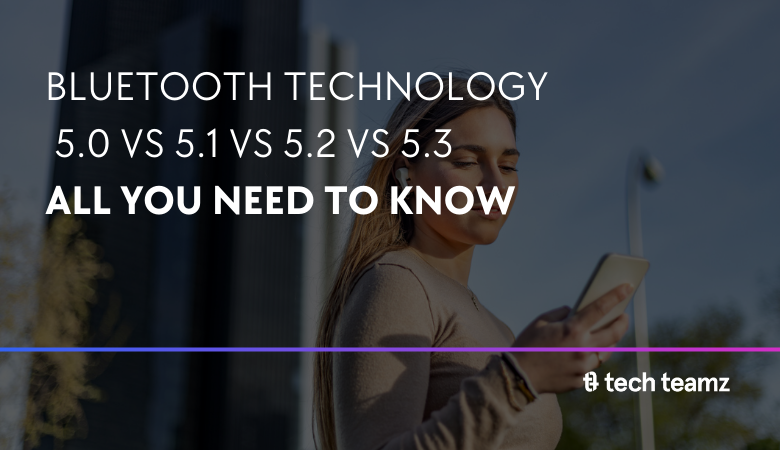In our increasingly connected world, Bluetooth technology has become an essential part of our daily lives, enabling seamless communication between various devices. With each new iteration of the Bluetooth standard, we see improvements in range, speed, and functionality. In this blog post, we’ll dive into the differences between Bluetooth 5.0, 5.1, 5.2, and the latest iteration, 5.3, to help you understand their respective features and benefits.
Bluetooth 5.0: Enhanced Range and Speed
Bluetooth 5.0 introduced significant improvements over its predecessor, including increased range and data transfer speeds. With a range of up to 800 feet (240 meters) and a doubling of data transfer rates compared to Bluetooth 4.2, it paved the way for better wireless audio quality, faster file transfers, and improved connection stability. This version also optimized power efficiency, extending the battery life of connected devices.
Bluetooth 5.1: Precise Location Tracking
Bluetooth 5.1 built upon the foundation of 5.0 by introducing angle-of-arrival (AoA) and angle-of departure (AoD) features. These advancements enabled more precise location tracking, making it easier to locate tagged objects or devices within a few centimeters. This technology found applications in emerging industries such as asset tracking and indoor navigation, enhancing the user experience for location-based services.
Bluetooth 5.2: Improved Audio Quality and LE Audio
Bluetooth 5.2 continued to refine the technology, focusing on audio quality and the introduction of Low Energy (LE) Audio. With LE Audio, users can enjoy high-quality audio streaming while preserving energy efficiency. This version also introduced Audio Sharing, allowing multiple users to share audio content seamlessly. Additionally, it enhanced Bluetooth Mesh, enabling better control and management of smart home devices.
Bluetooth 5.3: A Step Forward in Coexistence and Performance
The latest iteration, Bluetooth 5.3, takes a significant step forward in addressing coexistence challenges in crowded wireless environments. It employs advanced interference mitigation techniques, reducing interference with other wireless technologies. This version also introduces Bluetooth LE Audio Pro, further enhancing audio quality, particularly for professional and entertainment applications.
Backward Compatibility
One important aspect to note is that each new Bluetooth version maintains backward compatibility with previous versions. This ensures that your Bluetooth 5.3 device can still connect to and communicate with devices running older versions like 5.0 or 5.1. This backward compatibility is crucial for the seamless integration of new devices into existing ecosystems.
The Future of Bluetooth
Bluetooth technology continues to evolve, offering consumers and businesses more advanced features and improved performance with each iteration. As the Internet of Things (IoT) and smart device ecosystems expand, Bluetooth will play an even more crucial role in connecting and controlling these devices, making our lives more convenient and efficient.
In conclusion, Bluetooth 5.0, 5.1, 5.2, and 5.3 represent significant milestones in the development of wireless communication technology. Each version has brought improvements in range, speed, and functionality, catering to the diverse needs of users and industries. As Bluetooth technology continues to advance, it will remain a key enabler of the connected world, powering our wireless future. Whether you’re looking for faster data transfers, precise location tracking, high-quality audio, or improved coexistence, Bluetooth’s various versions have you covered.
At Tech Teamz, we work with an exceptional team of expert Bluetooth engineers. Whether you need cutting-edge solutions, seamless integration or custom Bluetooth applications, our engineers knowledge and experience allows us to consistently exceed our customers expectations and provide the highest level of service to meet your specific needs. Stay tuned for further innovations in this ever-evolving technology landscape.


